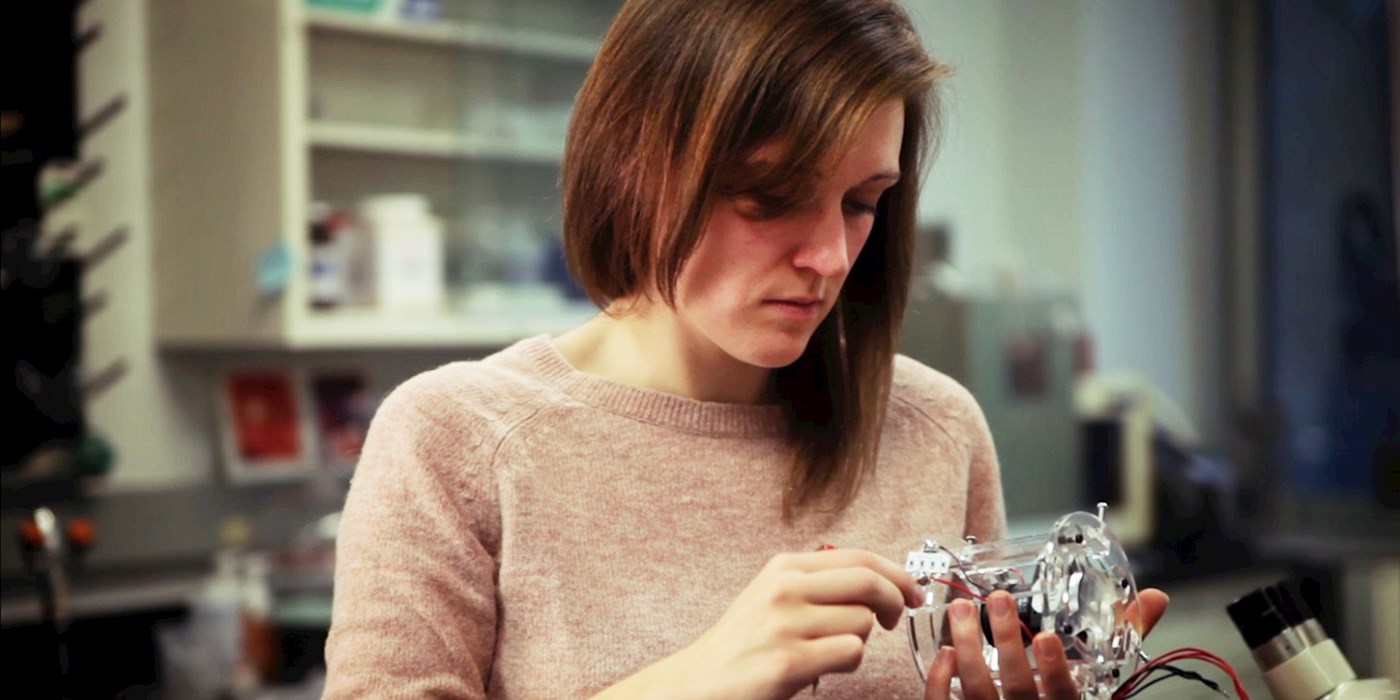A new device promises to reduce costs and eliminate unnecessary biopsy procedures in women who find lumps in their breasts. The device, called PalpAid, was developed by Carnegie Mellon University alumna Molly Blank, who recently received her Ph.D. in biomedical engineering. The device helps measure and track breast lumps through soft tissue mechanics and computer vision techniques.
“It’s truly astonishing that in the 21st century, physicians still rely on their sense of touch to assess deep lesions in the breast,” said CMU Professor James Antaki, Blank’s adviser. He said he can imagine PalpAid’s patent-pending technology becoming as common as stethoscopes and tongue depressors.
Blank’s next step is to secure clinical trials with the aim of making PalpAid available within a year through her startup, CurvyQ.
“People don’t realize that when you’re 20-something, there’s a very high probability of having a lump of some kind, but the greatest risk factor for actual breast cancer isn’t family history, it’s increased age,” she said.
Blank said less than 2 percent of biopsies performed uncover cancer, which means some two million procedures each year may be causing needless anxiety and $2 billion in health care costs.
Using soft robotic touch coupled with computer vision techniques, PalpAid quantifies a lump’s precise size and shape, allowing women to better monitor potential change and avoid additional testing.
“Assessing a lump’s stability over time is a well-established medical guideline,” she said. “Right now that path isn’t as viable because it’s scary when you’ve got a lump.
“A lot of the time these lumps will resolve themselves or shrink,” she said. Now Blank is continuing to make connections with the medical community while working as a University of Washington design lecturer.
The daughter of an engineer, Blank grew up taking apart VCRs and said she always knew she wanted to invent medical devices. After taking a course from Antaki, she said she realized they shared a mission of making health care more affordable.
To help commercialize her technology, Blank took advantage of CMU resources such as the Center for Technology Transfer and Enterprise Creation and the Center for Innovation and Entrepreneurship. Blank’s work also was supported by CMU’s NSF I-Corps program.
“Opportunities were so available,” she said. “It was easy for me to jump in. I received lots of encouragement from the CMU community. It was incredible.”
Footnotes
Photo Caption: Blank adjusts her CurvyQ device.




